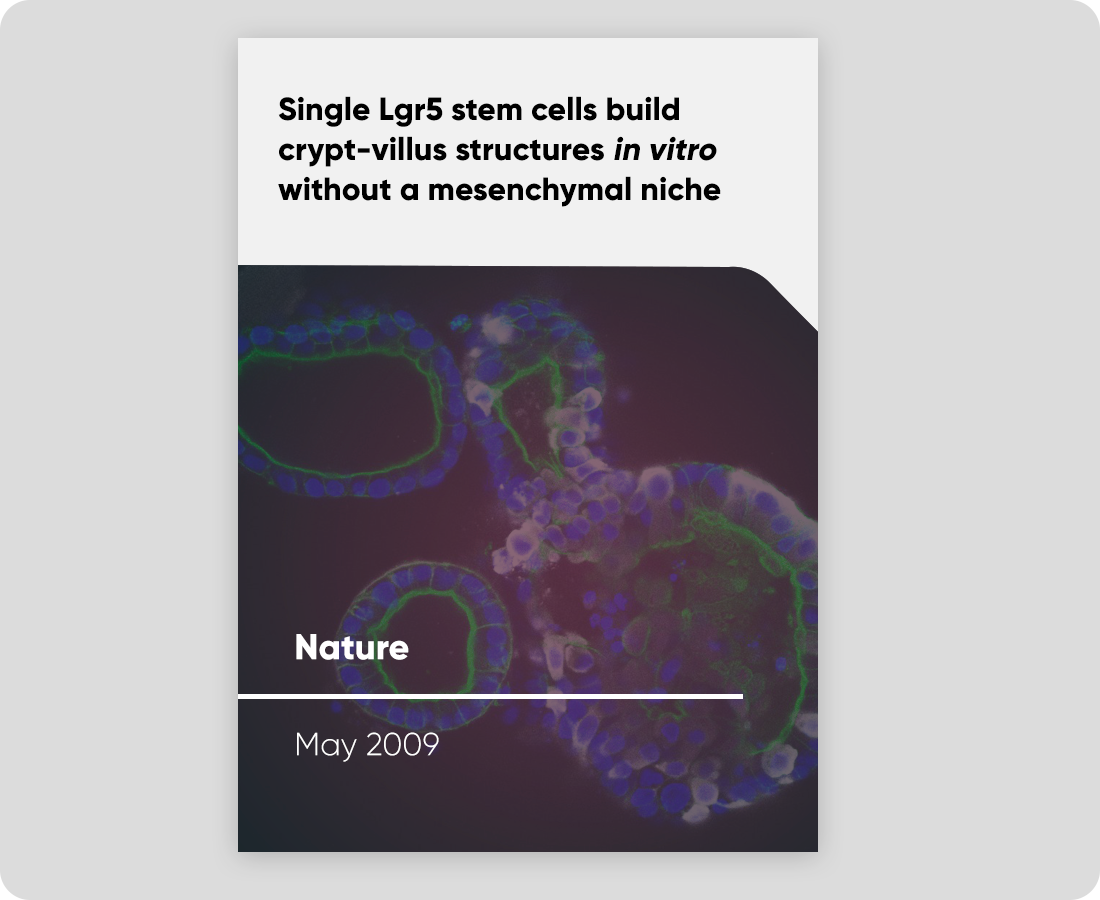Abstract
The intestinal epithelium is the most rapidly self-renewing tissue in adult mammals. We have recently demonstrated the presence of about six cycling Lgr5(+) stem cells at the bottoms of small-intestinal crypts. Here we describe the establishment of long-term culture conditions under which single crypts undergo multiple crypt fission events, while simultaneously generating villus-like epithelial domains in which all differentiated cell types are present. Single-sorted Lgr5(+) stem cells can also initiate these crypt-villus organoids. Tracing experiments indicate that the Lgr5(+) stem-cell hierarchy is maintained in organoids. We conclude that intestinal crypt-villus units are self-organizing structures, which can be built from a single stem cell in the absence of a non-epithelial cellular niche.
Discover more from HUB:
Explore our organoid screening platform
Discover other publications on patient-derived organoids.


